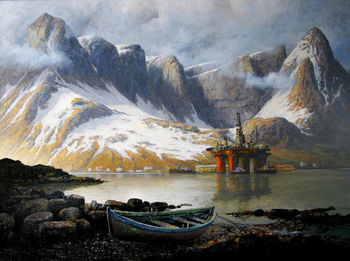In the fall of 2000, Statoil drilled for the first time, but did not discover any oil (Naturvernforbundet, 2017). However, as this took place, political pressure against the Labor Party grew along with public unrest. MDG voiced its opinion on the matter, and even though they had little influence at the time, other political parties and Norwegian environmental organizations expressed the same concern. In 2001, direct protests took place, with the most famous one located in Lofoten itself. Two small activist groups, “Nature and Youth” and “Bellona” took matters into their own hands; as a Hydro oilrig was on its way to Lofoten to conduct test drills looking for oil, a fishing boat with activists from the two organizations blocked the boat dragging the oil rig. Ten days before the national election, the Labor Party found themselves in a very delicate situation. Afraid to lose critical votes in the upcoming election, Siri Bjerke, the minister of environment and a member of the Labor Party, ordered the dragging boat and oil rig to turn around, thus cancelling Hydro’s oil search (Naturvernforbundet, 2017).
The fishing boat blocking Hydro’s potential oil excavation was viewed as a turning point in the Lofoten debate. The Labor Party underperformed in the election, to which many attributes the protests in the days running up to it. Three smaller environmentally-friendly parties were able to form a coalition and control the Norwegian Parliament, and immediately stated that their intention was to ban oil excavation in Lofoten. This was a major victory for environmental organizations, including MDG (Naturvernforbundet 2017).
Source:
Naturvernforbundet. (2017). Ja til et oljefritt Lofoten, Vesterålen og Senja. Retrieved April 21, 2018, from https://naturvernforbundet.no/ja-til-et-oljefritt-lofoten-vesteralen-og-senja/category3858.html

